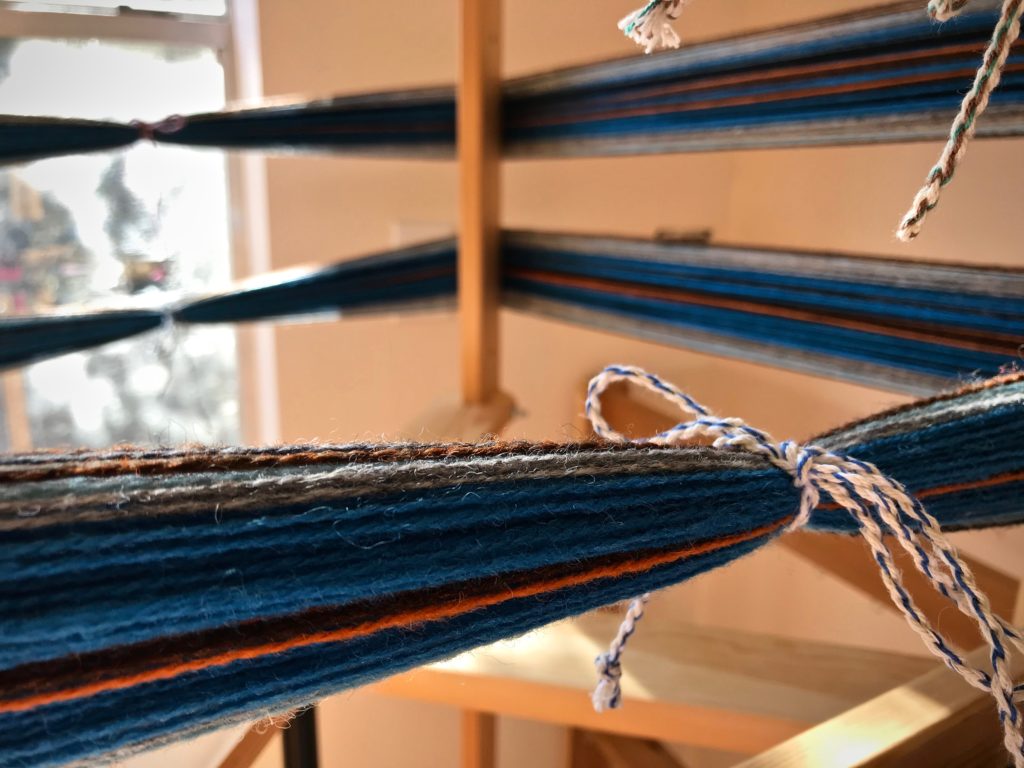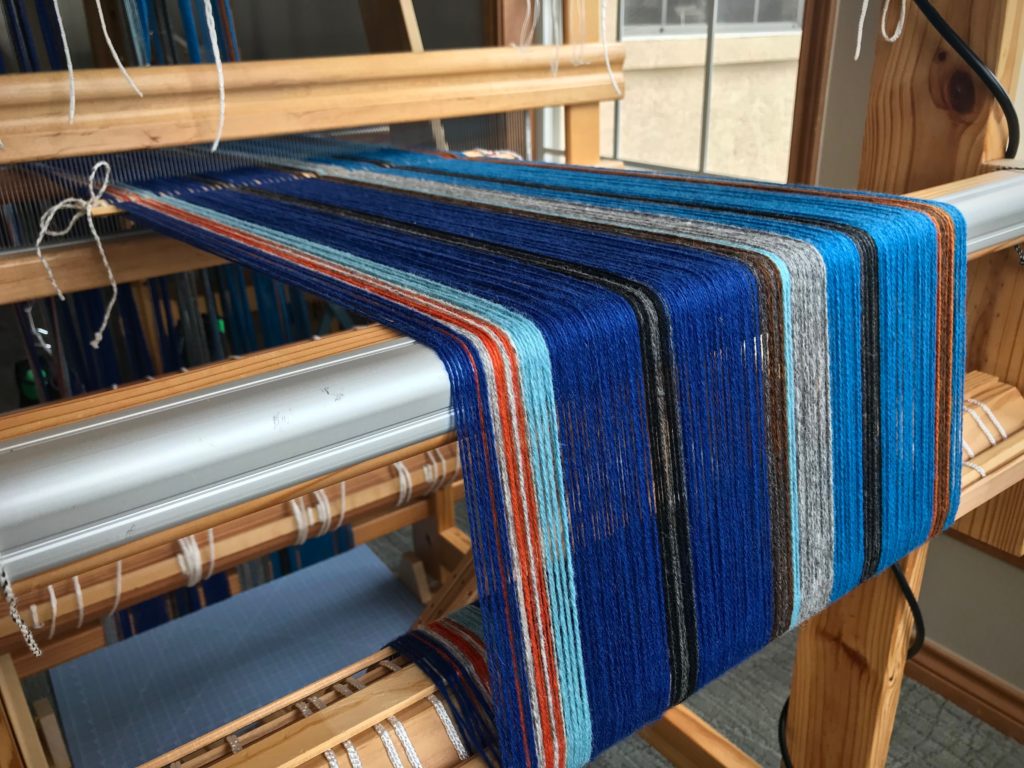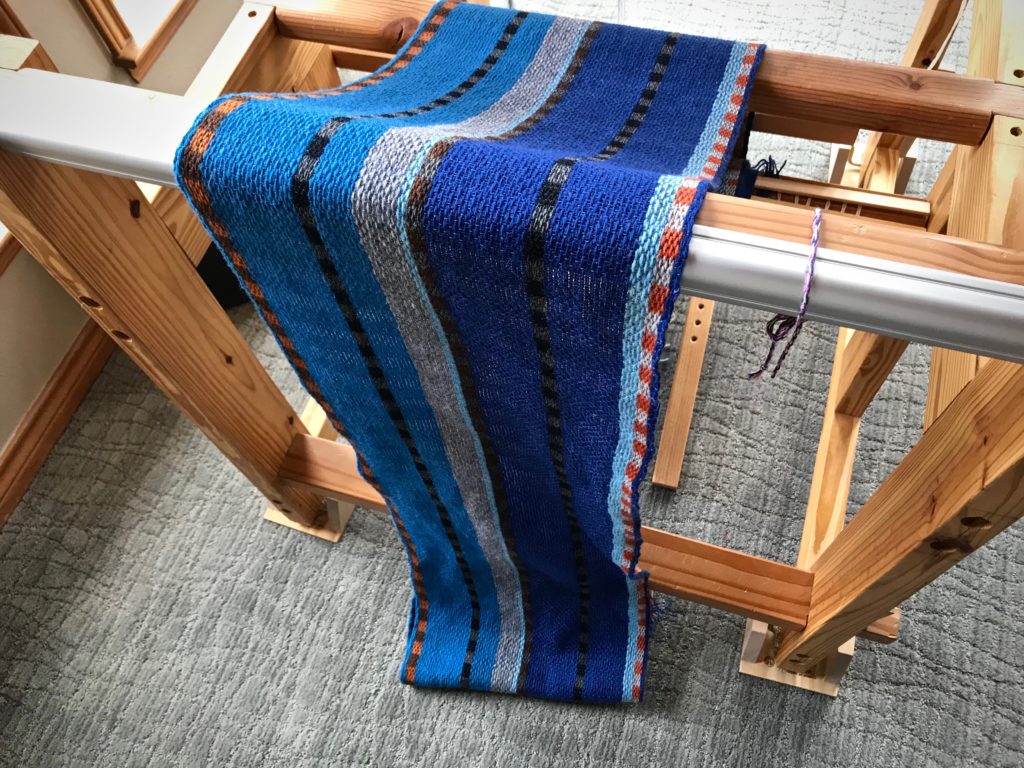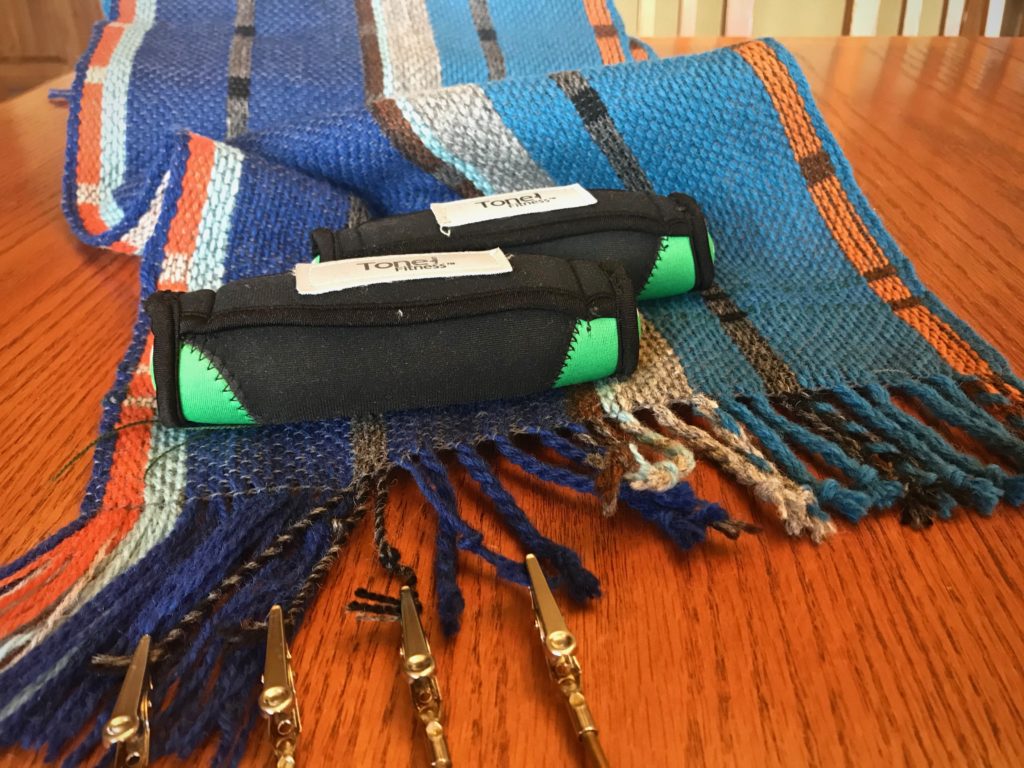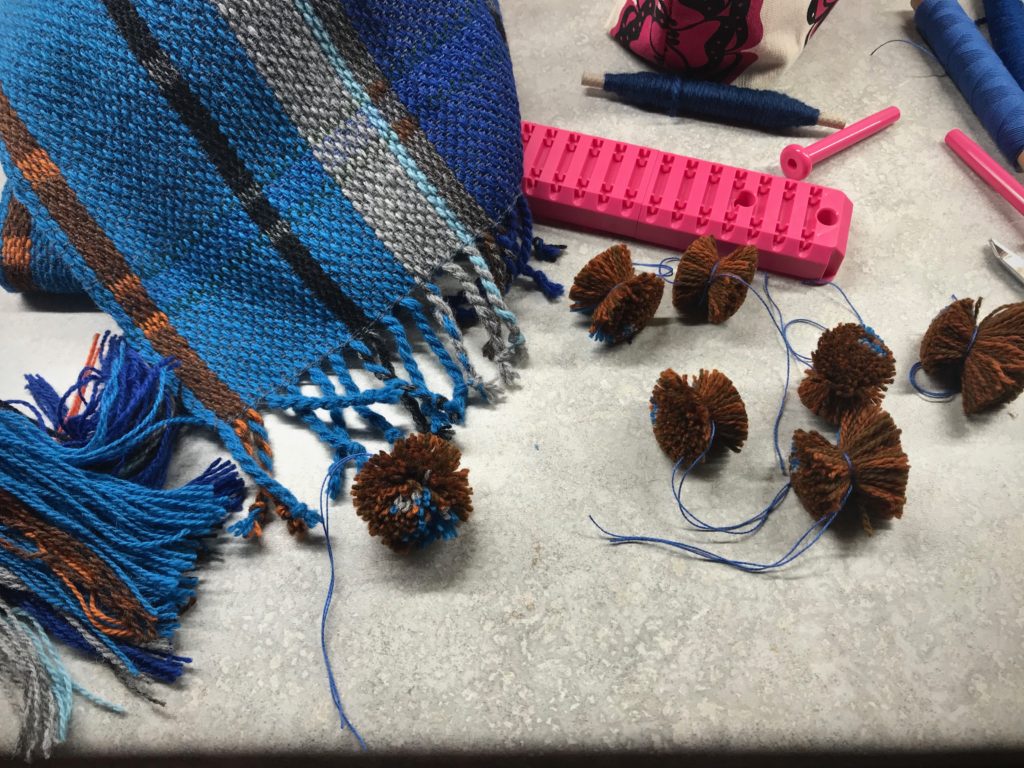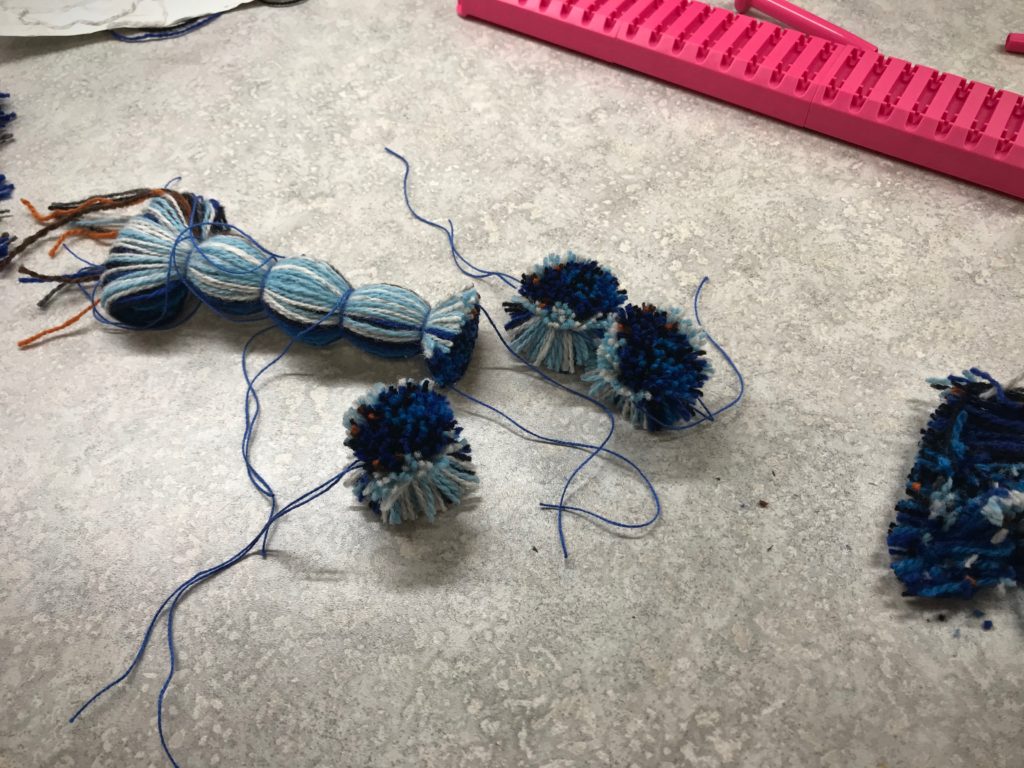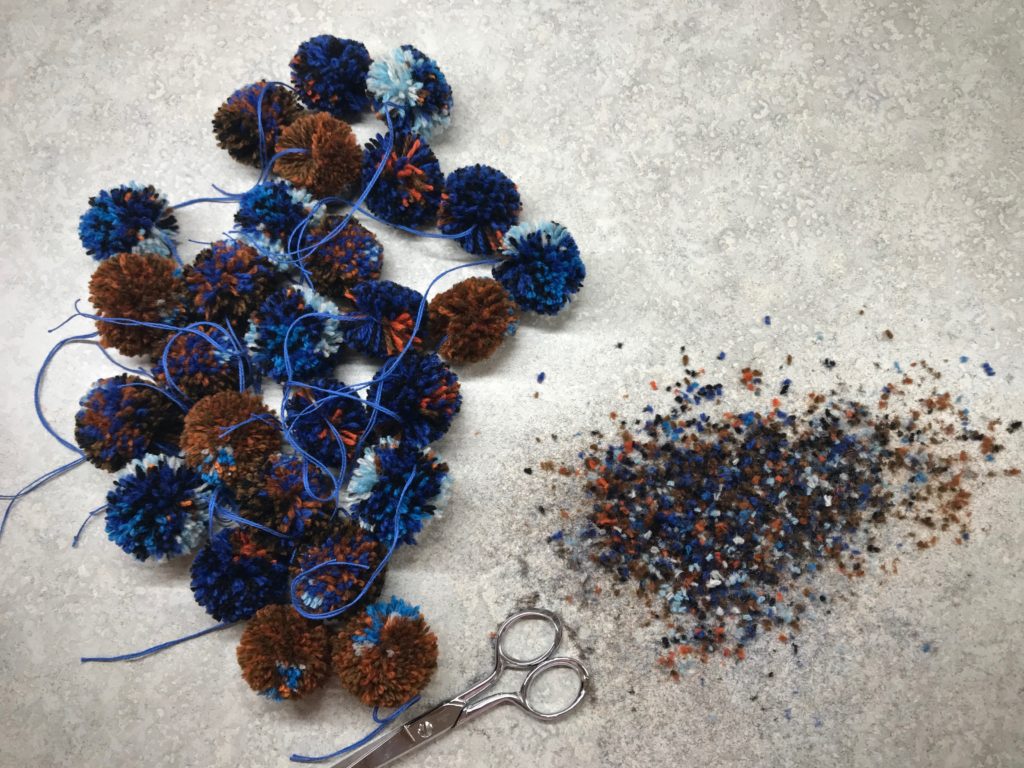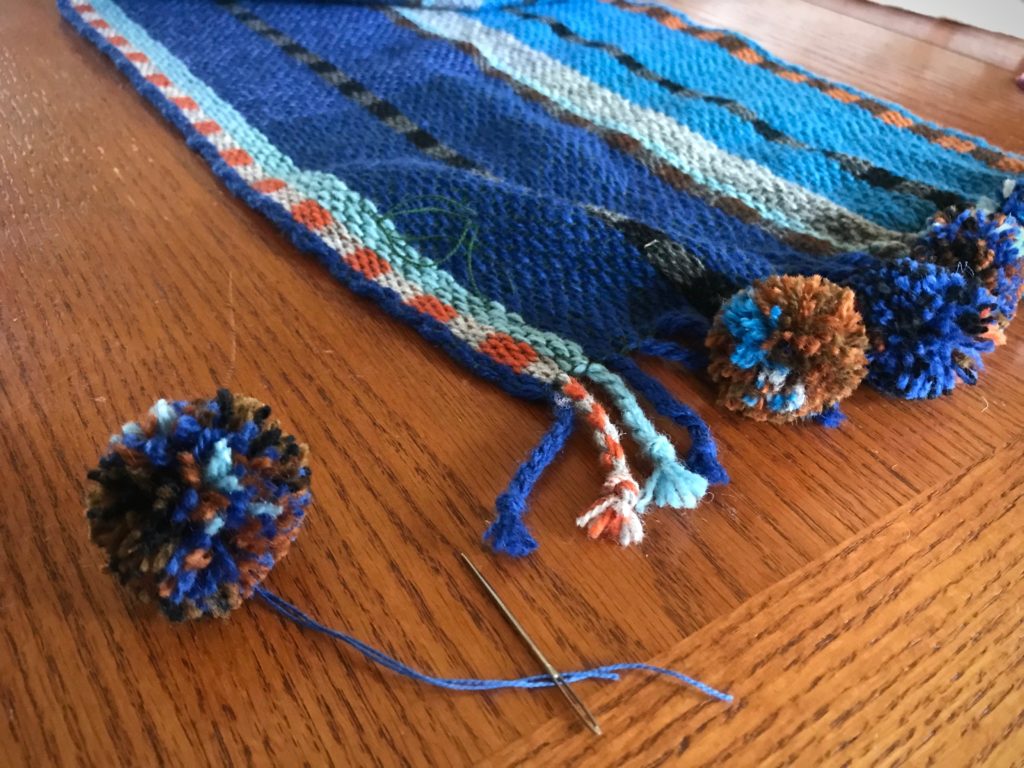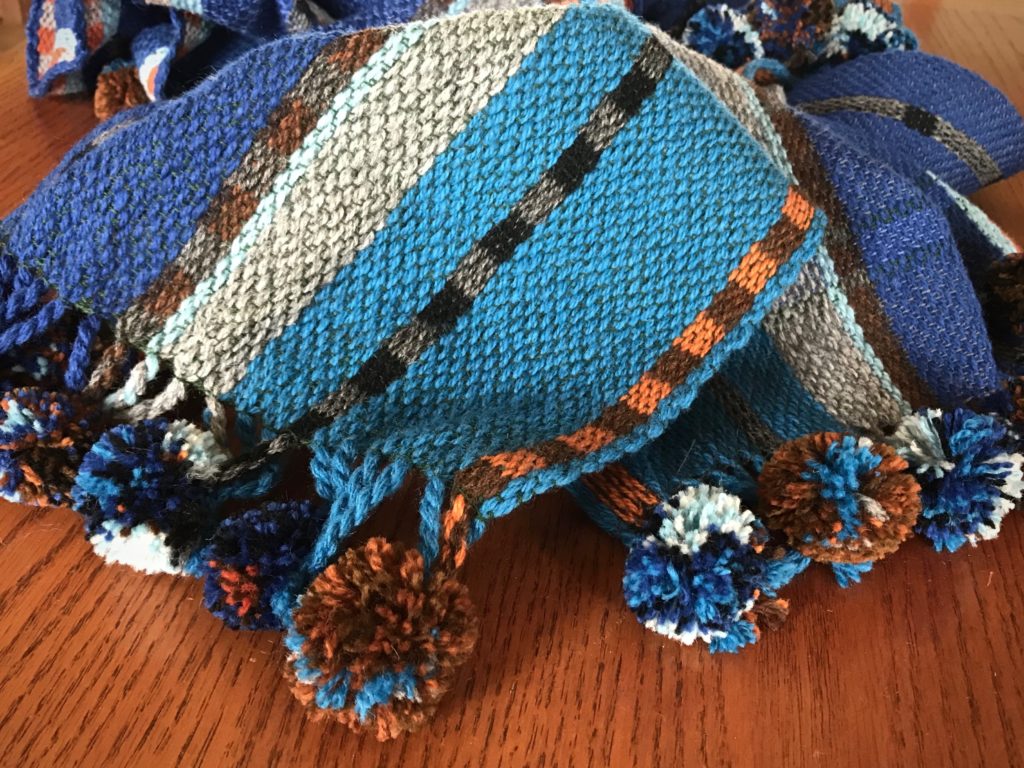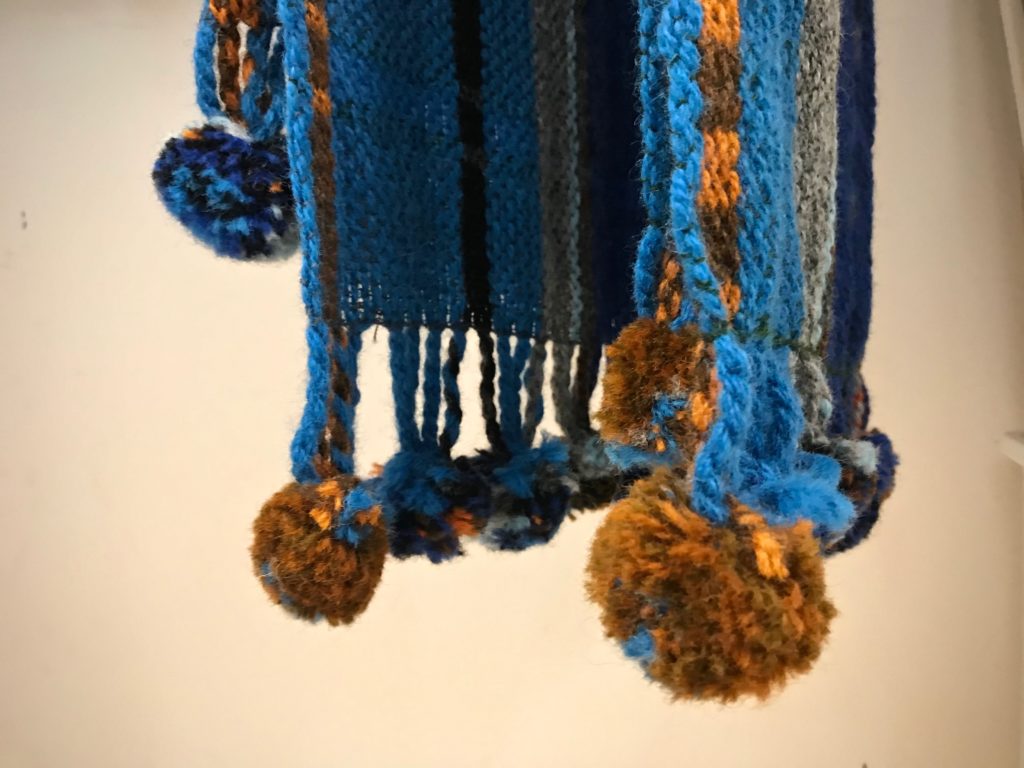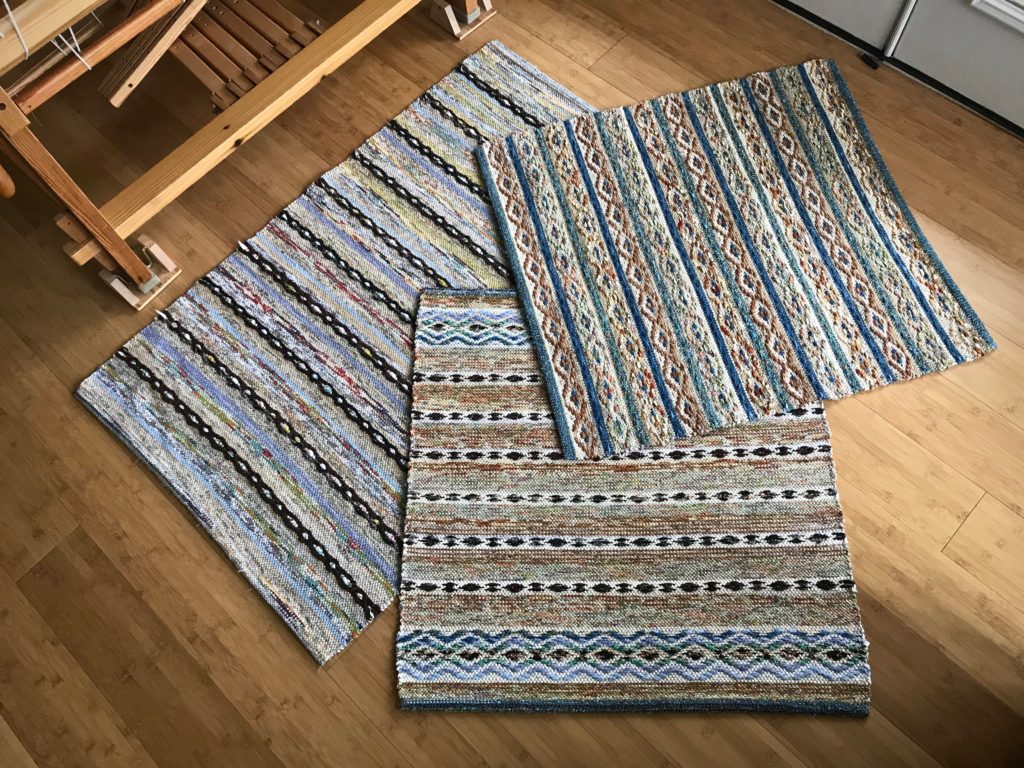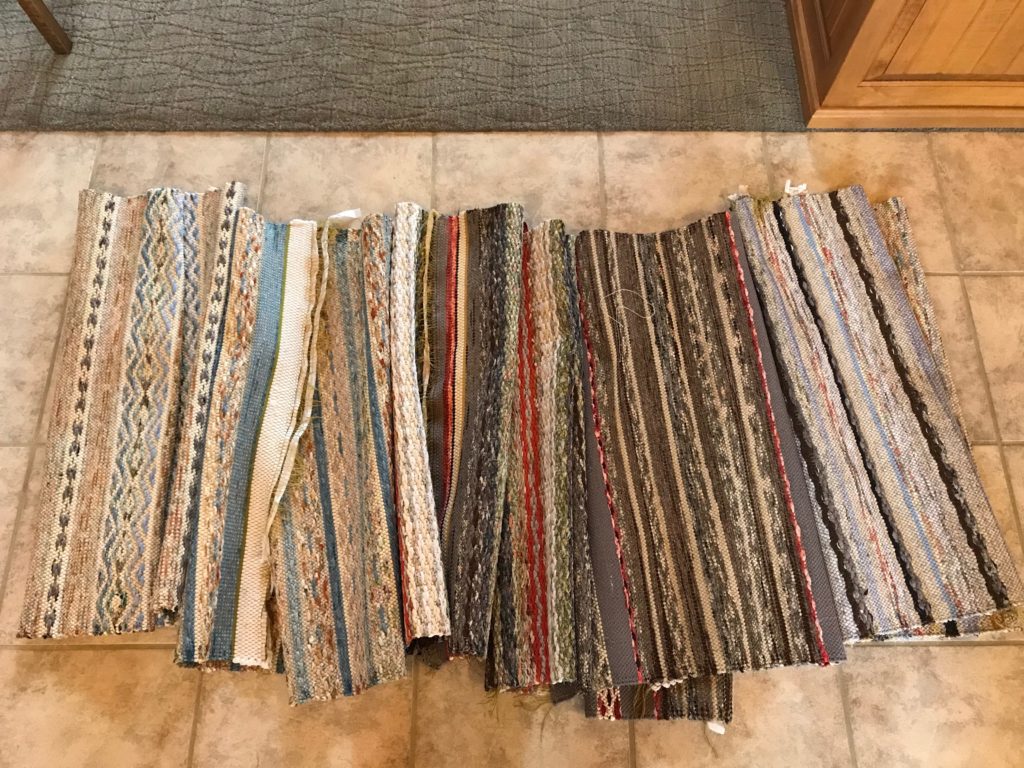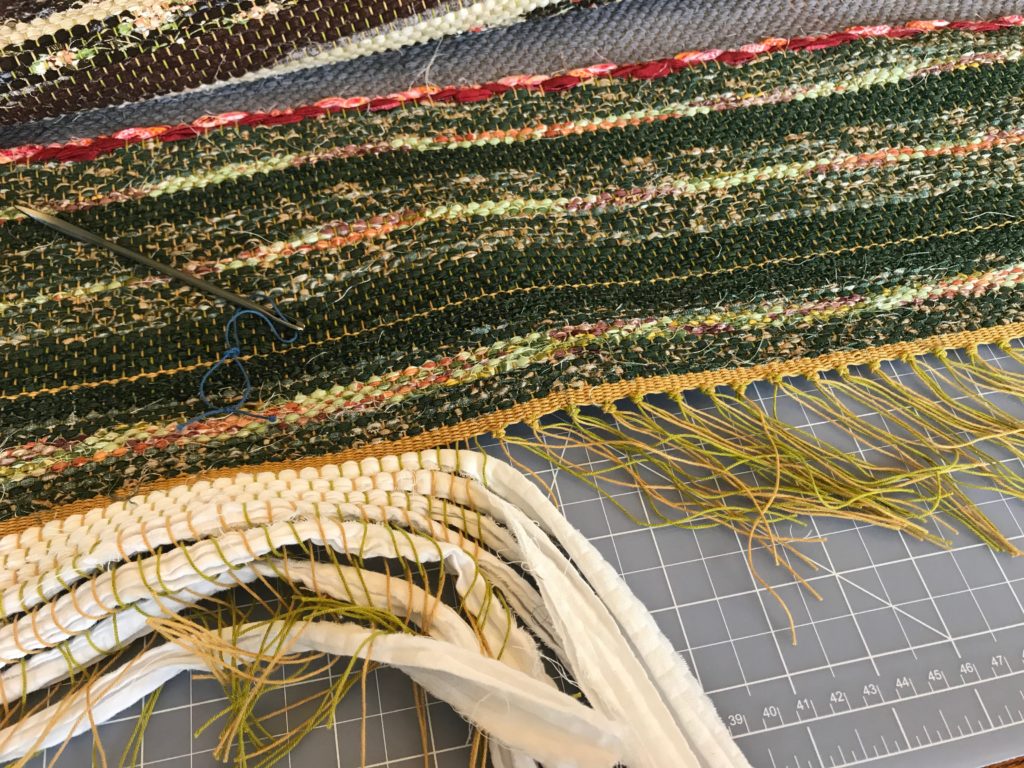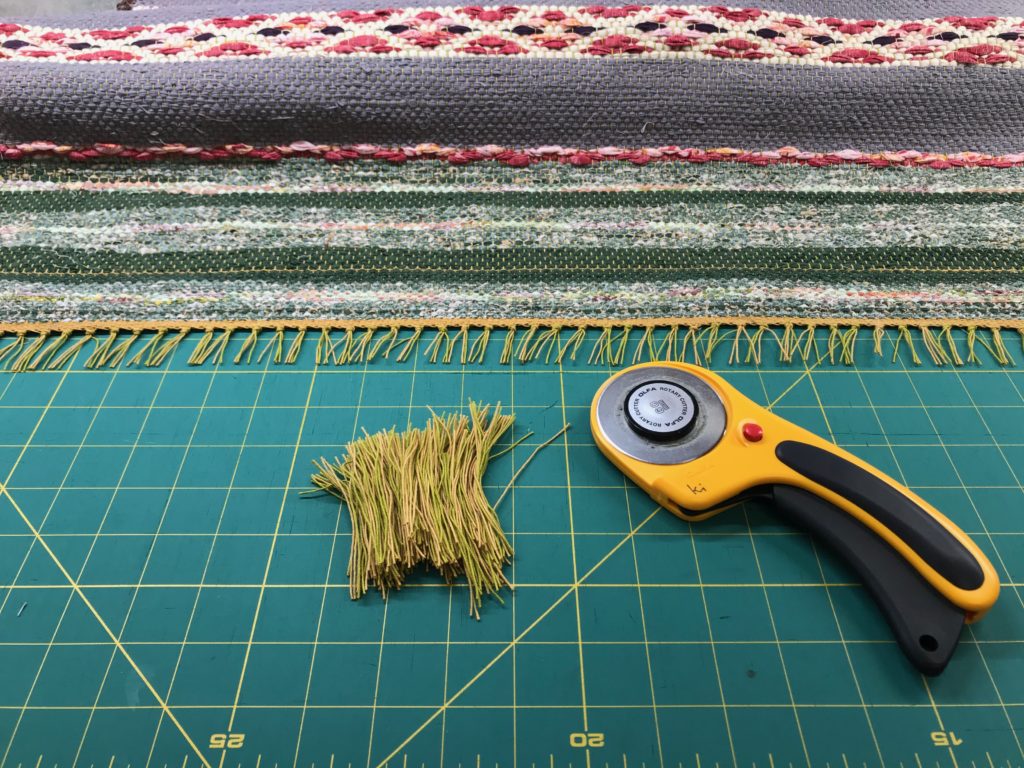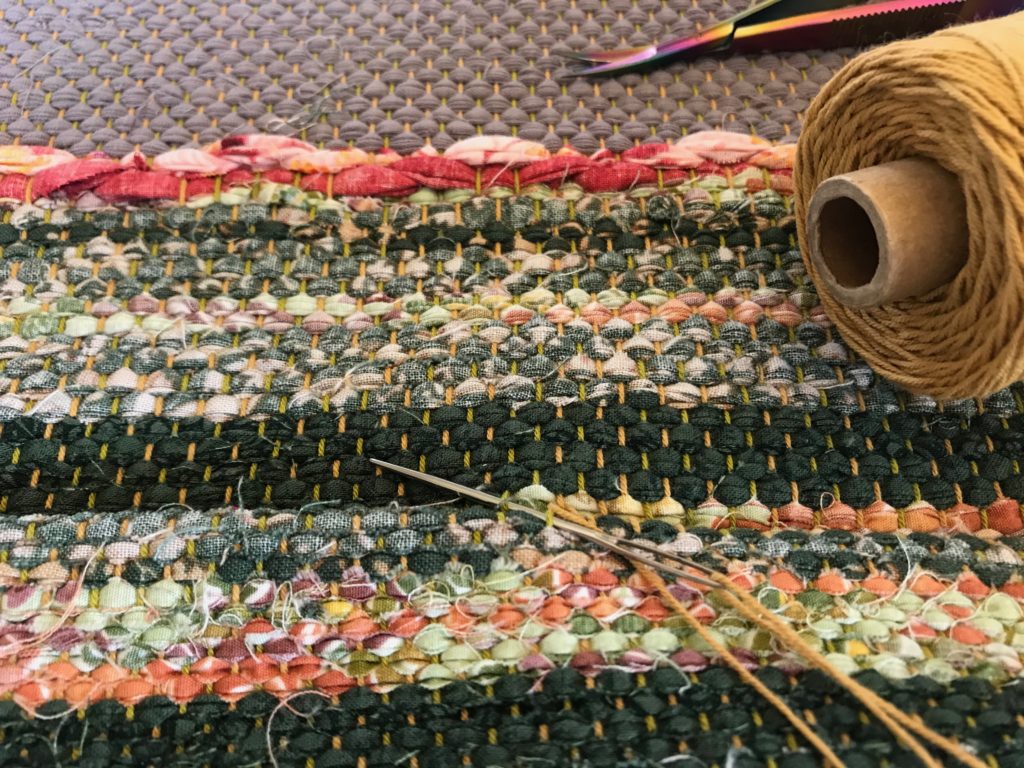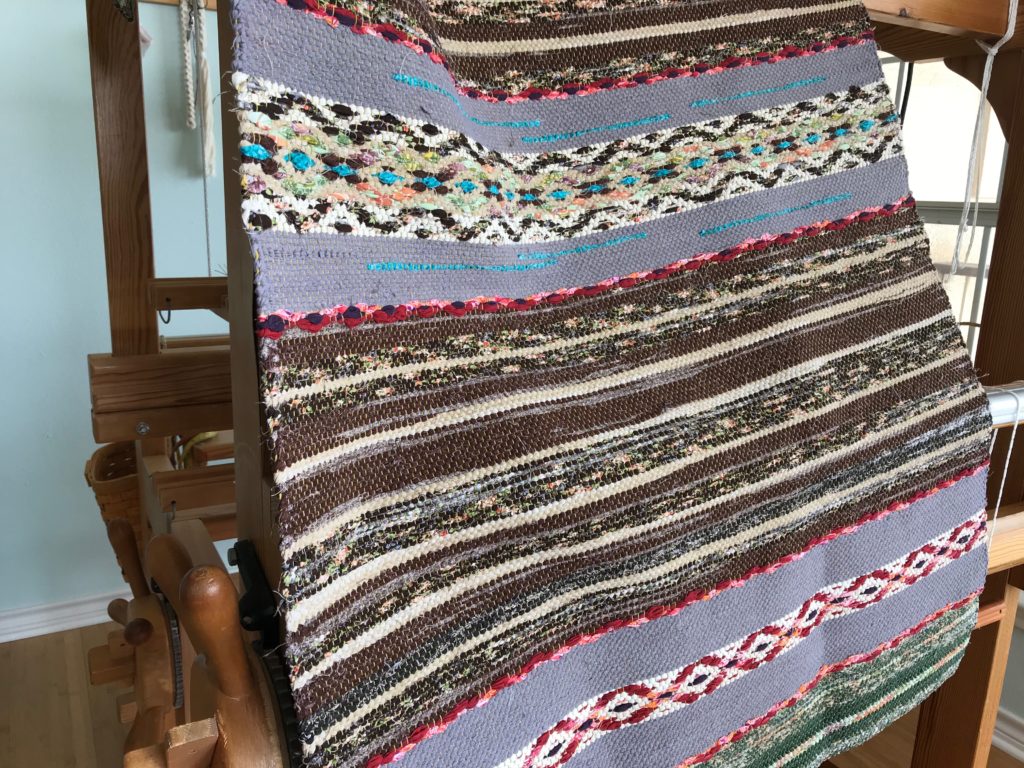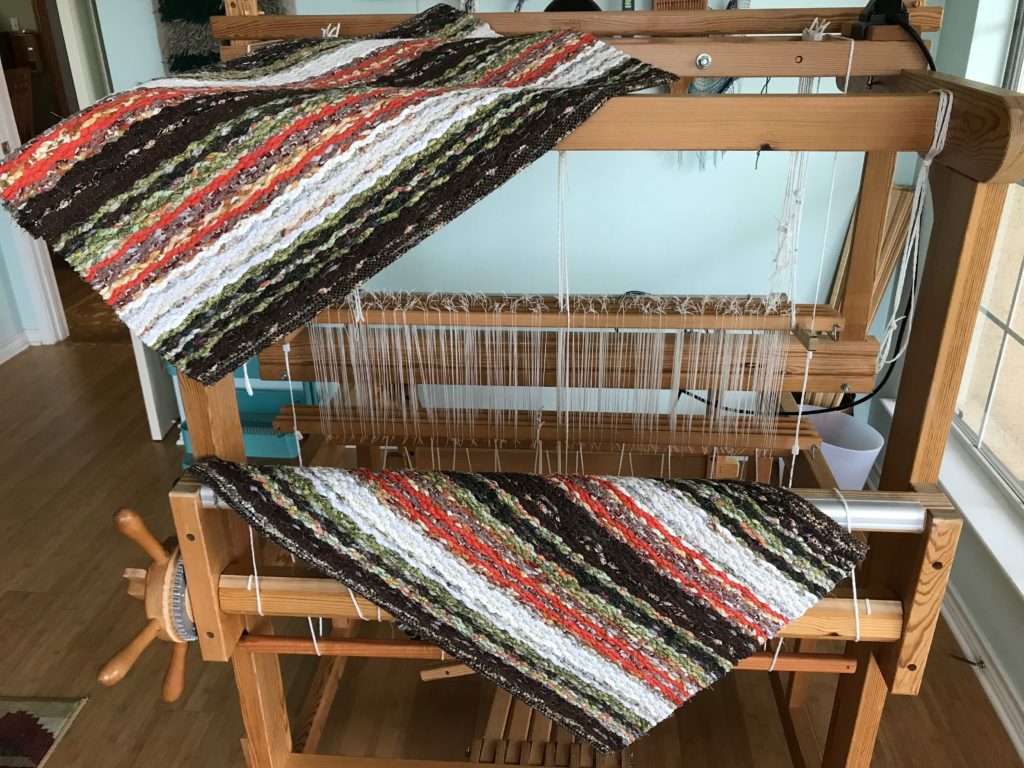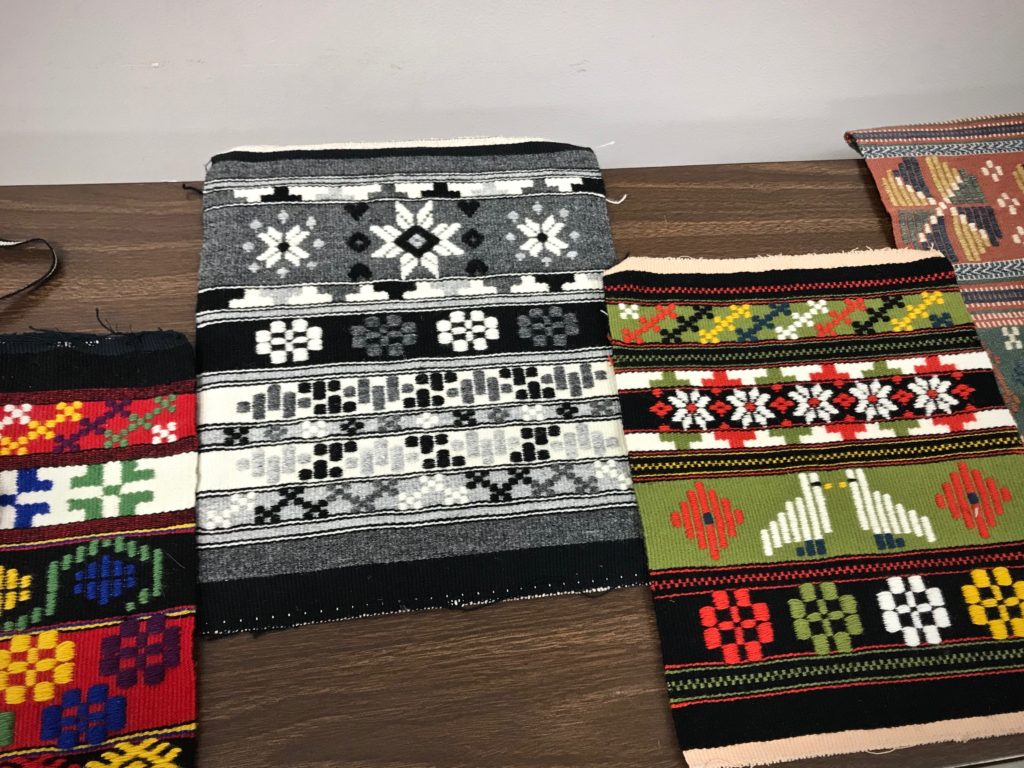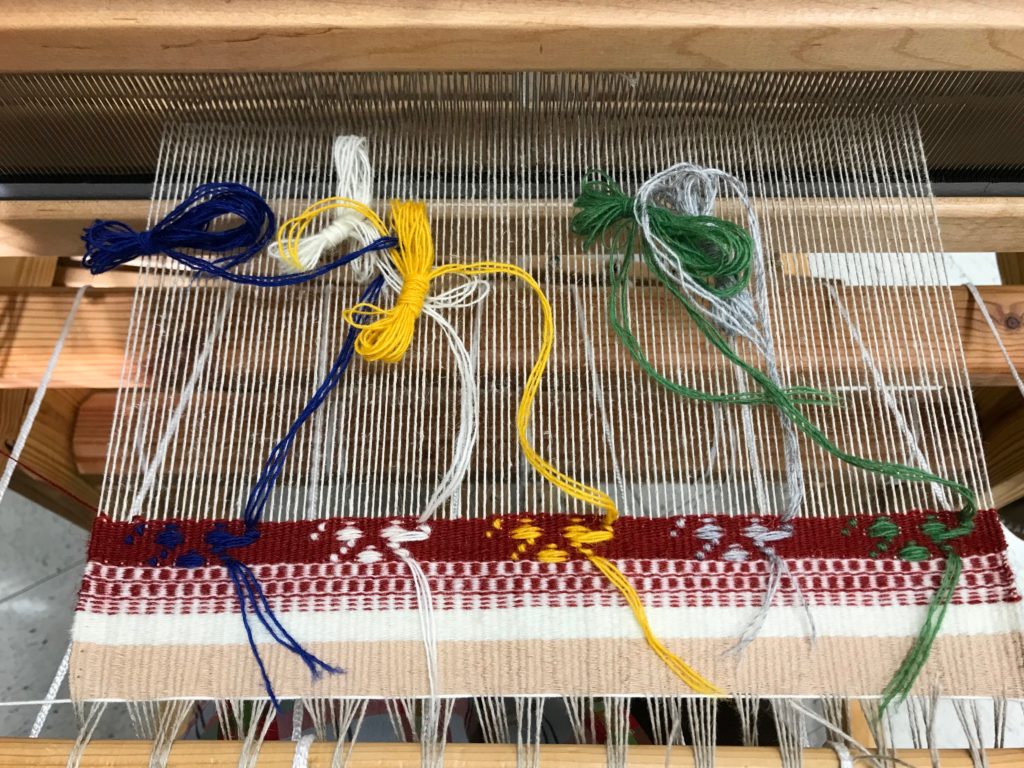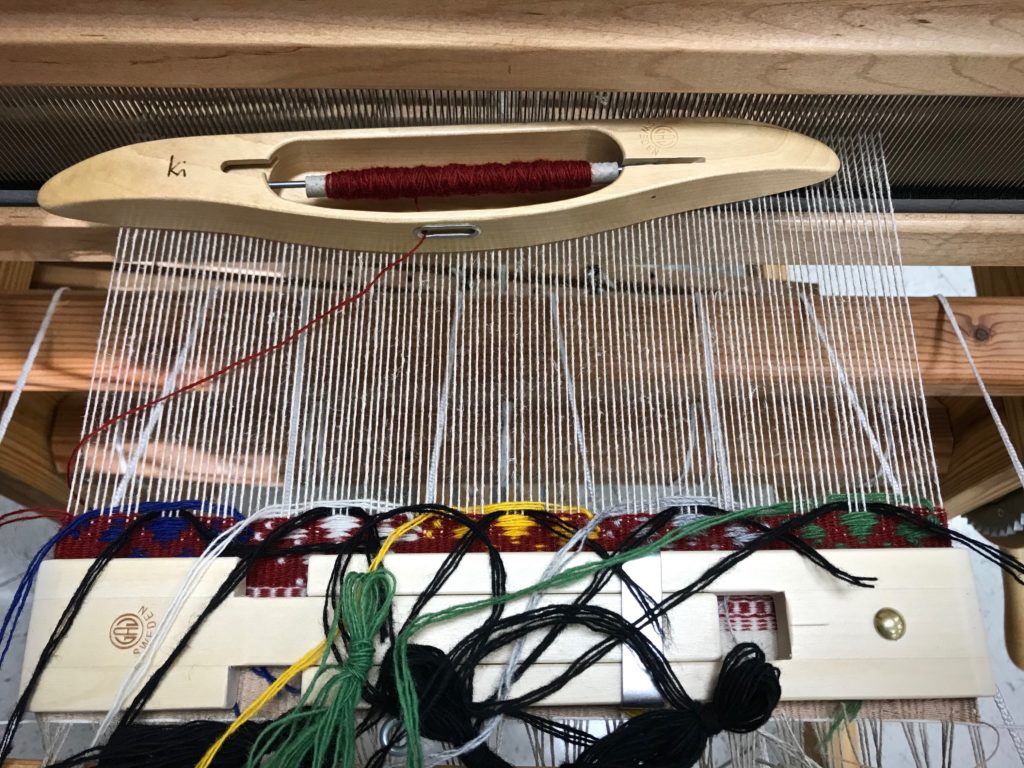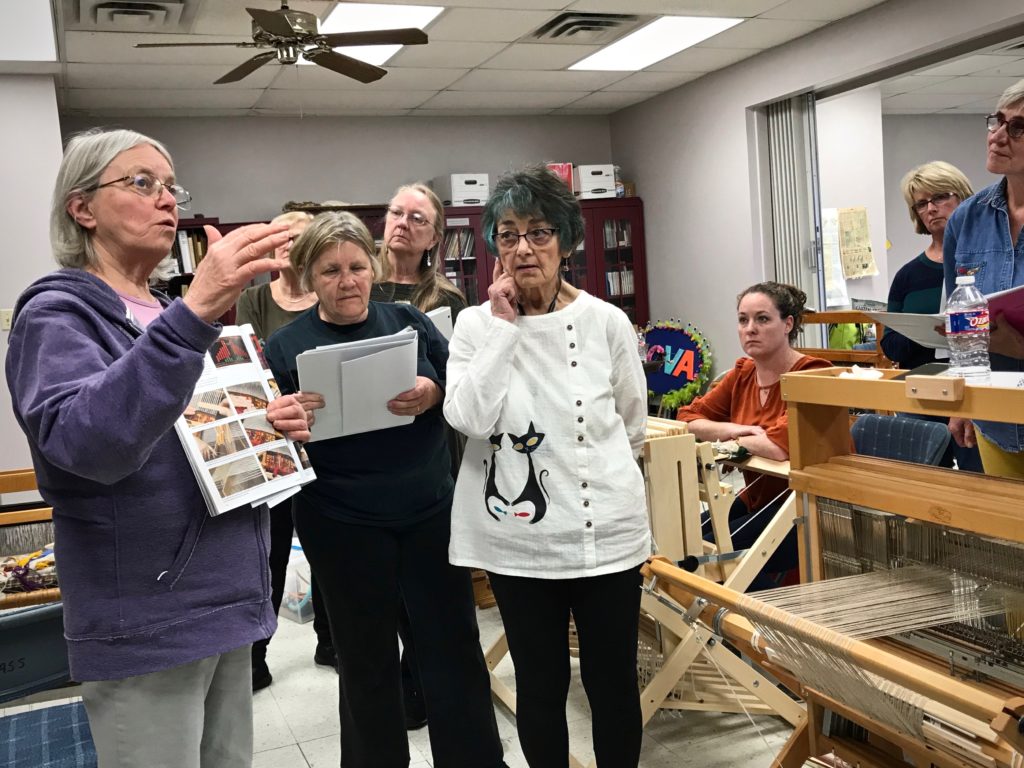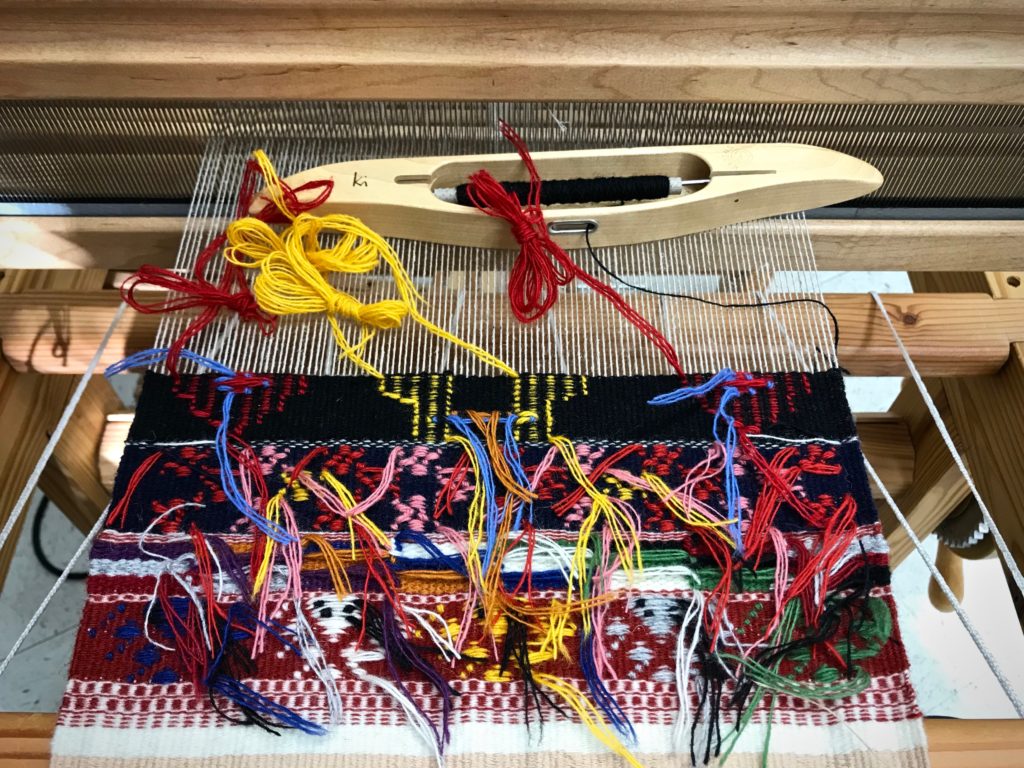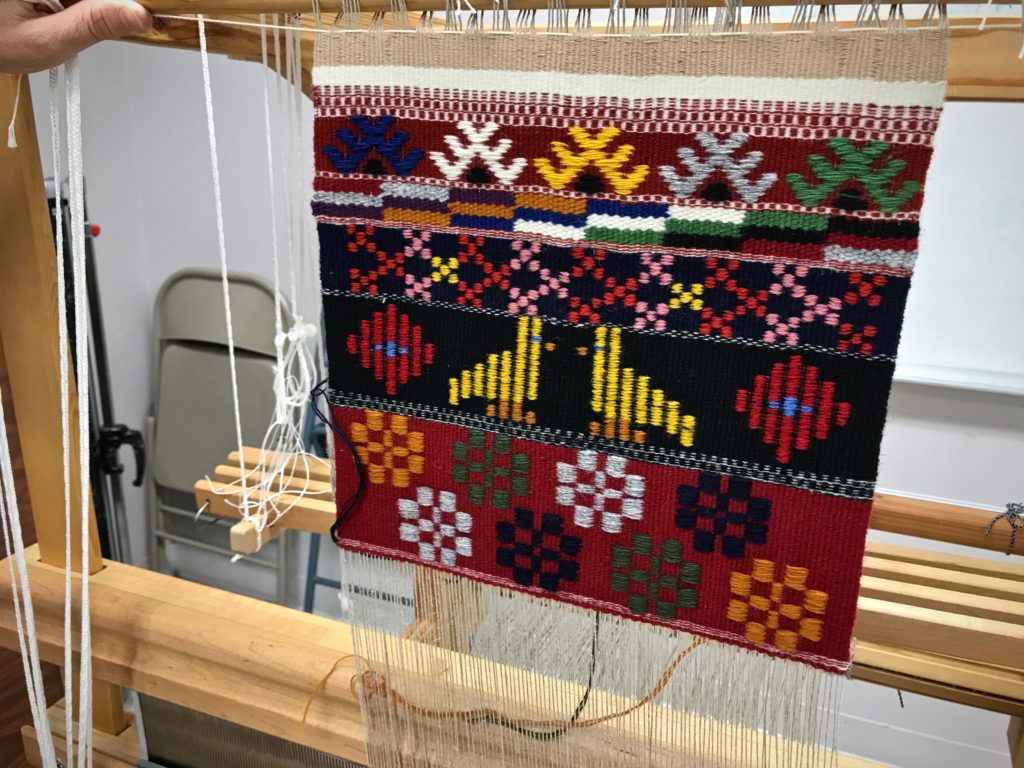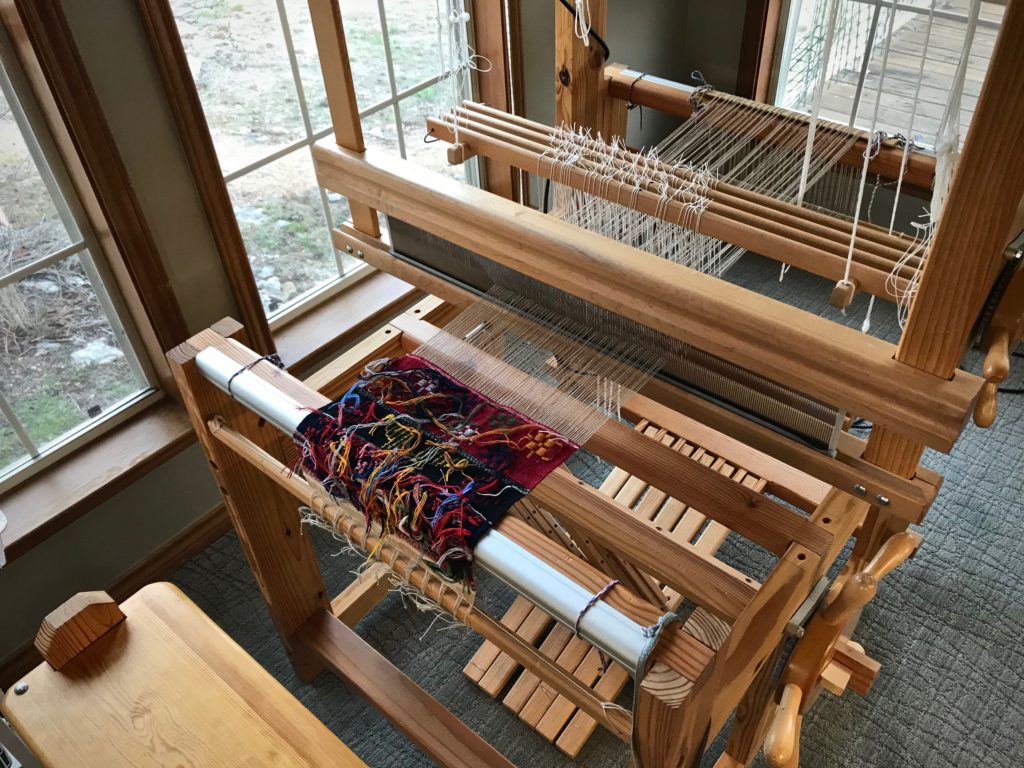My grandma made a pattern on brown paper for a neck pillow. I suppose she found the pattern in a magazine or newspaper decades ago. I am using my copy of her pattern to make my own neck pillow. Maybe someday my pillow will be as worn and wobbly as Grandma’s well-loved neck pillow that I remember.
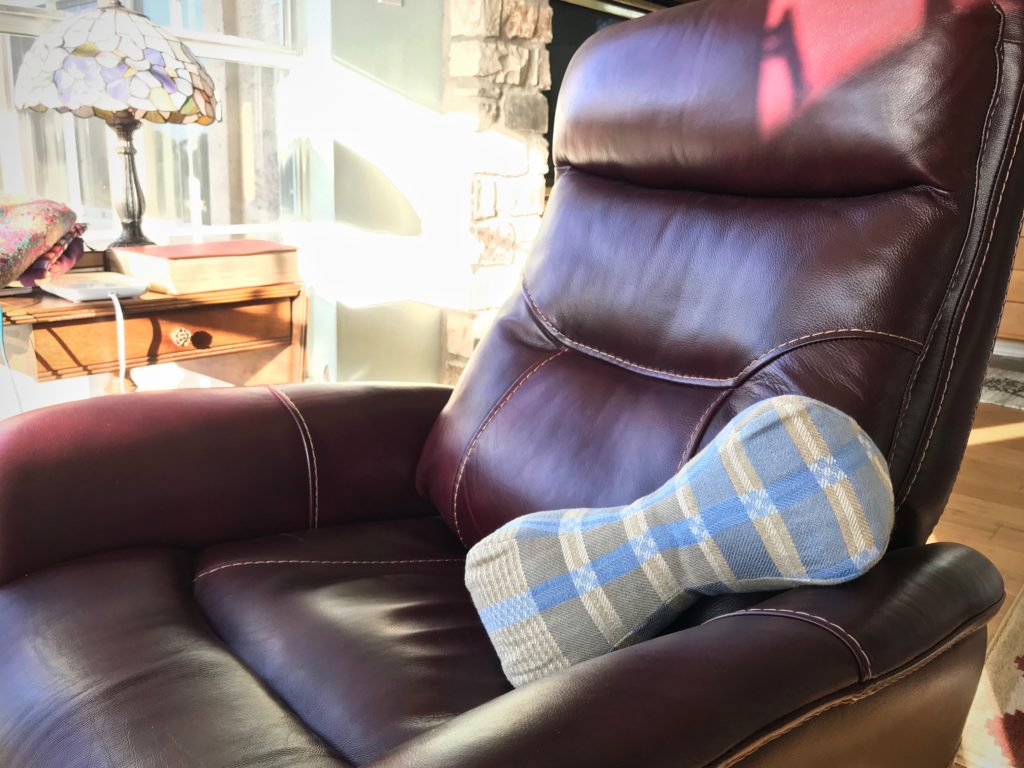
Looking through my pile of handwoven scraps I find the piece of fabric that had been hanging as a Roman shade on the back door of our previous home. This two-block twill in cotton and linen was my first 8-shaft project on my floor loom. Good memories! The fabric, softened and slightly faded through daily use, is perfect for the comfy neck pillow I’m imagining. (Unlike Grandma’s pillow, I’m making this one with a removable cover so it can be easily laundered.)
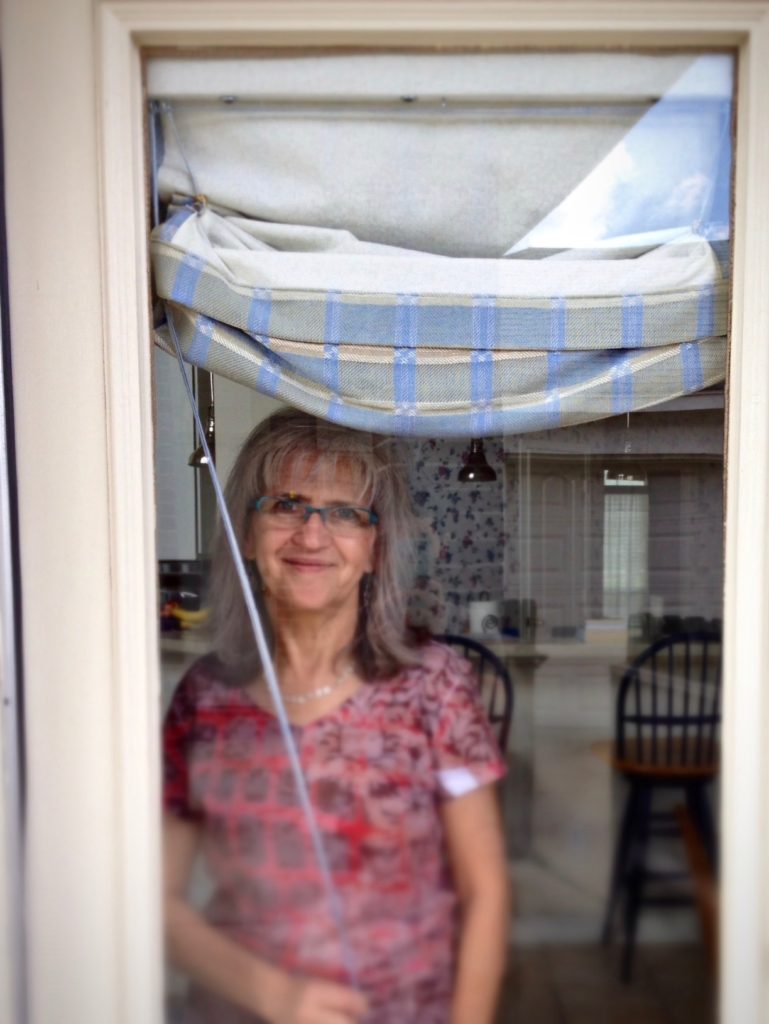
Instructions for Constructing a Handwoven Neck Pillow
Supplies:
- Cotton muslin, pre-washed
- Handwoven fabric, pre-washed
- Cluster Fluff, or other cluster fill or polyester fiberfill
- 7” invisible zipper
- Sewing machine
- Invisible zipper foot
- Sewing thread
- Hand-sewing needle
- Iron
- Sleeve board for pressing, optional
Steps:
- Cut four pillow pattern pieces from the muslin.
- Sew two of the muslin pieces together, right sides together. Press seams open.
- Sew the other two muslin pieces together, right sides together. Press seams open.
- Sew the two parts together, right sides together, leaving a 4-inch opening for turning and stuffing. Press seams open using a sleeve board.
- Turn the pillow right side out.
- Stuff with Cluster Fluff, starting at the furthest end from the opening. Fill to desired fullness.
- Hand stitch the opening closed.
- Cut four pillow pattern pieces from the handwoven fabric.
- Serge or zigzag the fabric edges. Press flat.
- Insert invisible zipper between two of the pieces.
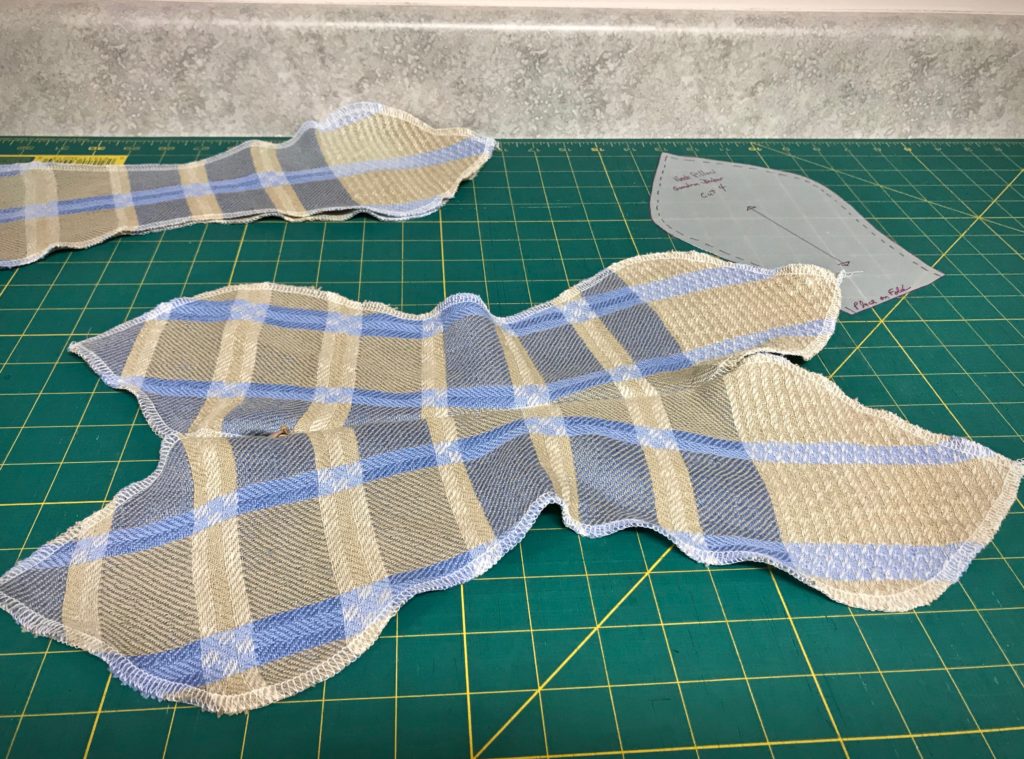
- Complete the seams at both ends of the zipper. Press seams open.
- Sew the two other pieces together, right sides together. Press seams open.
- Open zipper, and sew the two parts together, right sides together. Press seams open using a sleeve board.
- Turn the pillow case right side out.
- Push the muslin pillow into the pillow case. Close the zipper.
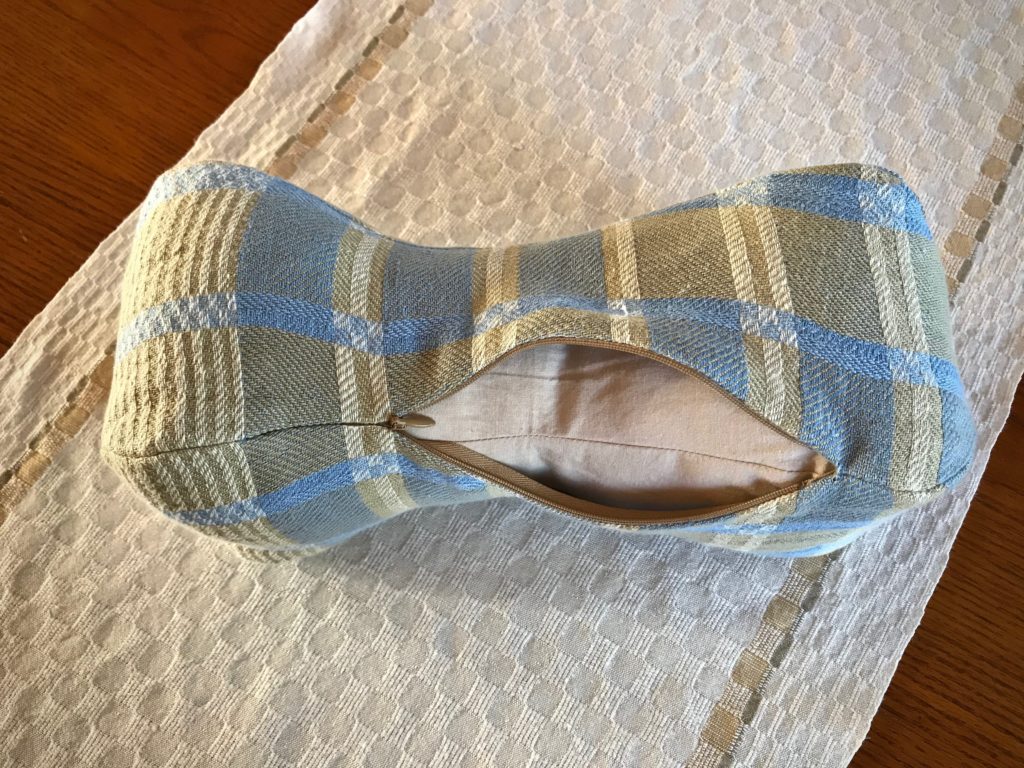
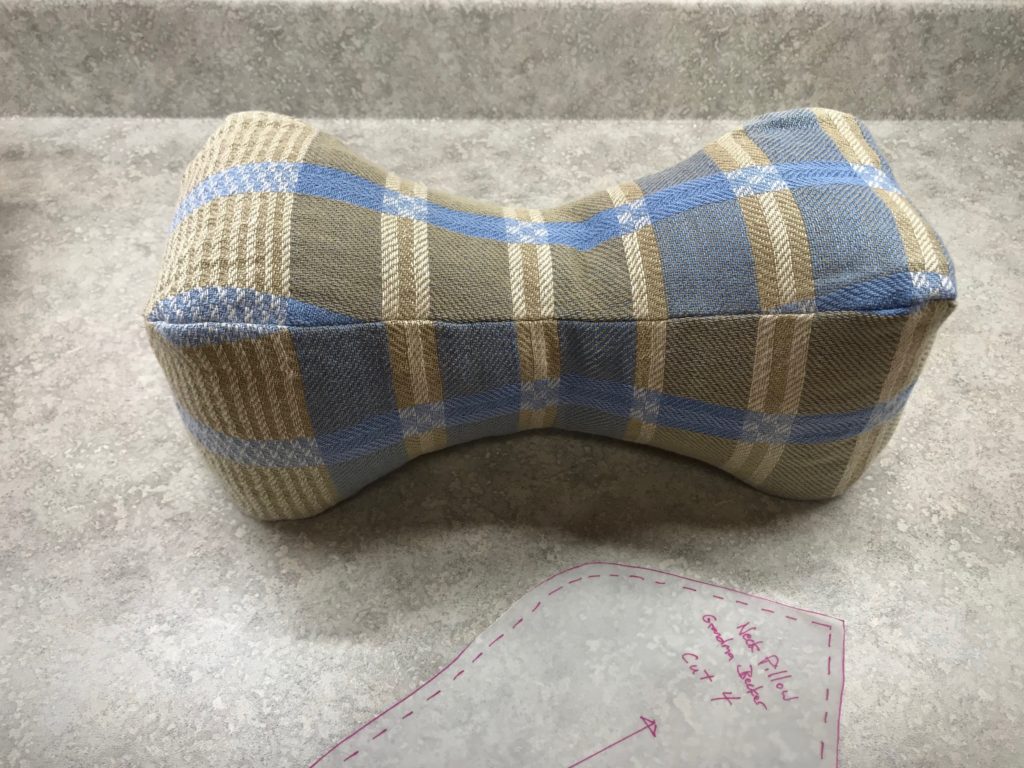
- Take a nap in your favorite chair with the pillow behind your neck.

If you would like a pdf copy of my grandma’s neck pillow pattern, please click HERE to send me an email request. I will be happy to send the pattern to you.
May you see old treasures in new ways.
Rest and Be Well,
Karen

